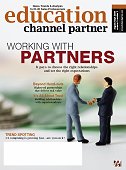Great marketing infuses a brand promise into everything a company does. It isn’t about the slogan – it is making the promise come alive for your customers in every small detail.

In honor of a Thanksgiving traipse down the tryptophan trail enjoy the images below from the Heart Attack Grill. They make a very simple promise and then drive it into every single thing the company does with quality and humor. They are also unabashedly politically incorrect.
They have done something remark-able – people will talk about it. TV news has covered it, blogs have been covering it, and radio is in on the act.
In education – where at least 50% of everyone’s sales come from referrals – this ability to be remark-able is essential. Yet we are saddled again and again with conservative copycat sample brochures and catalogs that could have been printed 15 or 20 years ago. What are you doing to make your products, services, and company remark-able?
I’m not suggesting that you mock 50 years of public health announcements – but just look at how they made a big promise and then delivered on it.
I don’t think this translates directly into the education publishing market – institutional sales have to be politically correct as anyone who has tangled with the California Legal and Social Compliance guidelines can attest to. The reason I’m highlighting it is that it is a stark example of driving the brand promise into the operations – taking messaging beyond empty slogans that no one believes or pays attention to.
First the menu:

When you are done get wheeled out to your car by a “nurse”

Follow below the fold for more hilarity.
 The Education Business Blog
The Education Business Blog


 Products designed for the classroom must meet the needs of teachers first. If students are the primary users of your instructional materials this may sound a little backwards – but it isn’t. Teachers can make or break your product before a student ever sees it.
Products designed for the classroom must meet the needs of teachers first. If students are the primary users of your instructional materials this may sound a little backwards – but it isn’t. Teachers can make or break your product before a student ever sees it. Do you need to pick a target market when entering the education market? One of the true signs of a rookie is a business plan built on selling to
Do you need to pick a target market when entering the education market? One of the true signs of a rookie is a business plan built on selling to  Rookies in the education market make a set of common mistakes. There are five concepts you need to grasp about selling to schools that will help you avoid execution error as you enter the learning market. Consider these the iron laws of marketing to public schools. Accept them, nay embrace them, and your job will be easier.
Rookies in the education market make a set of common mistakes. There are five concepts you need to grasp about selling to schools that will help you avoid execution error as you enter the learning market. Consider these the iron laws of marketing to public schools. Accept them, nay embrace them, and your job will be easier. Piping hot education related blog topics served here! The debate over formative assessment, the top 10 sites for educational games, crowd-sourcing the next great novel, controversy around Microsoft’s new ads, the relationship between quality and advertising, and a hilarious spoof of Politicians all get the nod this week.
Piping hot education related blog topics served here! The debate over formative assessment, the top 10 sites for educational games, crowd-sourcing the next great novel, controversy around Microsoft’s new ads, the relationship between quality and advertising, and a hilarious spoof of Politicians all get the nod this week.
 Powerpoint slides are “glance media” just like billboards. Today’s post by Garr Reynolds at
Powerpoint slides are “glance media” just like billboards. Today’s post by Garr Reynolds at  Schools are inundated with paper and instructional materials at this time of year. Those of us who build education products and create marketing collateral should be cognizant of is how wasteful so much of this is.
Schools are inundated with paper and instructional materials at this time of year. Those of us who build education products and create marketing collateral should be cognizant of is how wasteful so much of this is. Education technology bloggers have been a busy lot with NECC 08, end of school year, and lots of new products to play with. Here are just a smattering of some of my favorite posts from the past few weeks. Enjoy.
Education technology bloggers have been a busy lot with NECC 08, end of school year, and lots of new products to play with. Here are just a smattering of some of my favorite posts from the past few weeks. Enjoy.